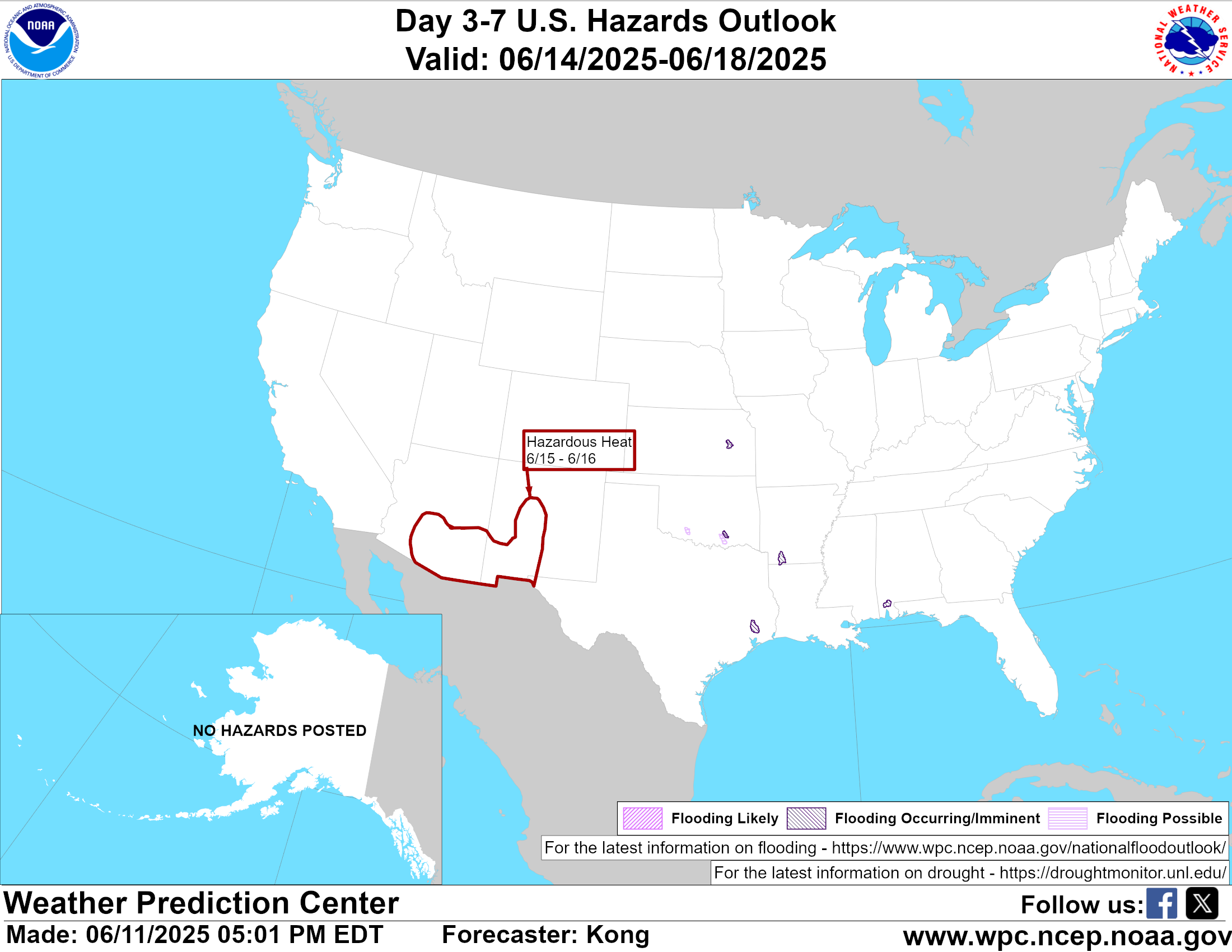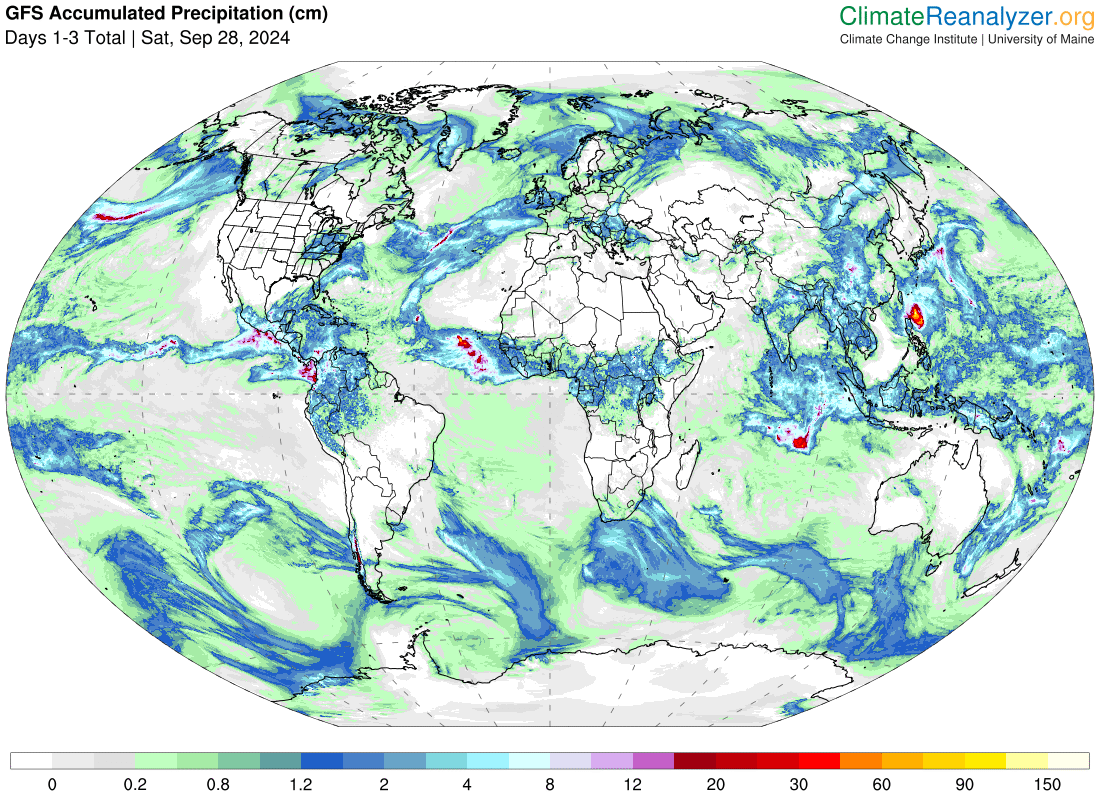Weather Outlook for the U.S. for Today Through at Least 22 Days and a Six-Day Forecast for the World: – Posted on February 6, 2025
This article focuses on what we are paying attention to in the next 48 to 72 hours. The article also includes weather maps for longer-term U.S. outlooks (up to four weeks) and a six-day World weather outlook which can be very useful for travelers.
First the NWS Short Range Forecast. The afternoon NWS text update can be found here after about 4 p.m. New York time but it is unlikely to have changed very much from the morning update. The images in this article automatically update.
Short Range Forecast Discussion
NWS Weather Prediction Center College Park MD
Thu Feb 06 2025
Valid 12Z Thu Feb 06 2025 – 12Z Sat Feb 08 2025…Winter storm to impact the Great Lakes, northern Mid-Atlantic and
Northeast with a combination of snow, sleet and freezing rain today……Next round of unsettled weather to enter the West today with the threat
of heavy rainfall/snows for California before snowfall chances spread
across the Northern Rockies and Northern Plains into Saturday……Record high temperatures are expected across much of the Southern U.S.
over the next few days…A winter storm currently impacting much of the Great Lakes, upper Ohio
Valley and northern Mid-Atlantic with light snow and a wintry mix is
forecast to continue today while quickly pushing into the Northeast. The
primary winter weather hazards are expected to be associated with freezing
rain as warm air aloft combined with stubborn cold at the surface leads to
an icy morning for many. Precipitation is likely to be coming to an end
across the Ohio Valley by sunrise, with freezing rain lingering across the
Mid-Atlantic and central Appalachians this morning. Meanwhile, snow is
expected to continue across the Great Lakes and shift into much of the
Northeast early today. Total ice accretion of up to a half inch is
possible across parts of eastern WV, western MD, far northern VA, and into
parts of south-central PA. This may lead to scattered power outages and
tree damage. Elsewhere, up to a quarter inch of ice is possible just
northwest of the I-95 corridor from Washington D.C. to Philadelphia, as
well as much of PA, northern OH, northern IN, and southern MI. This amount
of ice is capable of making untreated roadways treacherous. The snowfall
aspect of this storm will feature light amounts (generally under a couple
inches) across the Great Lakes outside of lake-effect snow in the eastern
U.P. of Michigan, with 2 to 5 inches expected throughout much of New
England. Much of the winter weather is anticipated to quickly end by this
evening and be followed by breezy westerly winds as a deepening low
pressure system swings across southeast Canada. In fact, strong winds have
prompted Blizzard Warnings today across the Keweenaw Peninsula of MI and
neighboring counties.The next storm system to enter the West Coast and eventually spread wintry
weather elsewhere throughout the Lower 48 is forecast to move onshore
later today. Initially, heavy coastal/lower elevation rain is expected
across CA with heavy snow likely into the Sierra Nevada, northern CA
ranges and southern OR. By Friday, the moderate to heavy snowfall located
just north of an associated area of low pressure shifts into the northern
Great Basin and northern Rockies. Total snowfall amounts over a foot are
expected across the higher terrain, with multiple feet of heavy snow
possible in the Sierra Nevada. By early this weekend the snowfall
potential enters the Northern Plains, where high probabilities (70-90%)
for at least 4 inches of snow stretches east-west from northern ND across
central MN, and into central WI. As the system continues to slide eastward
on Saturday night, wintry weather will quickly begin to impact much of the
Great Lakes, upper Ohio Valley, Mid-Atlantic, and Northeast. Freezing rain
is possible for southern areas similar to where the ongoing ice threat
exists today, with heavy snow (over 4 inches) most likely in the
Northeast. Be sure to check local forecasts for the latest updated
information.While winter storm systems cross the middle and northern U.S., much of the
South is forecast to remain quite warm. In fact, some areas could see
record breaking warmth continue through this weekend as highs into the 70s
and 80s stretch from the Southwest to the Southern Plains and much of the
Southeast. Dozens of stations across 13 states between Arizona and North
Carolina are currently forecast to break or tie daily high temperature
records. Meanwhile, the coldest air over the next few days will be
confined to the northern High Plains as highs remain in the single digits
and lows dip well below zero.


